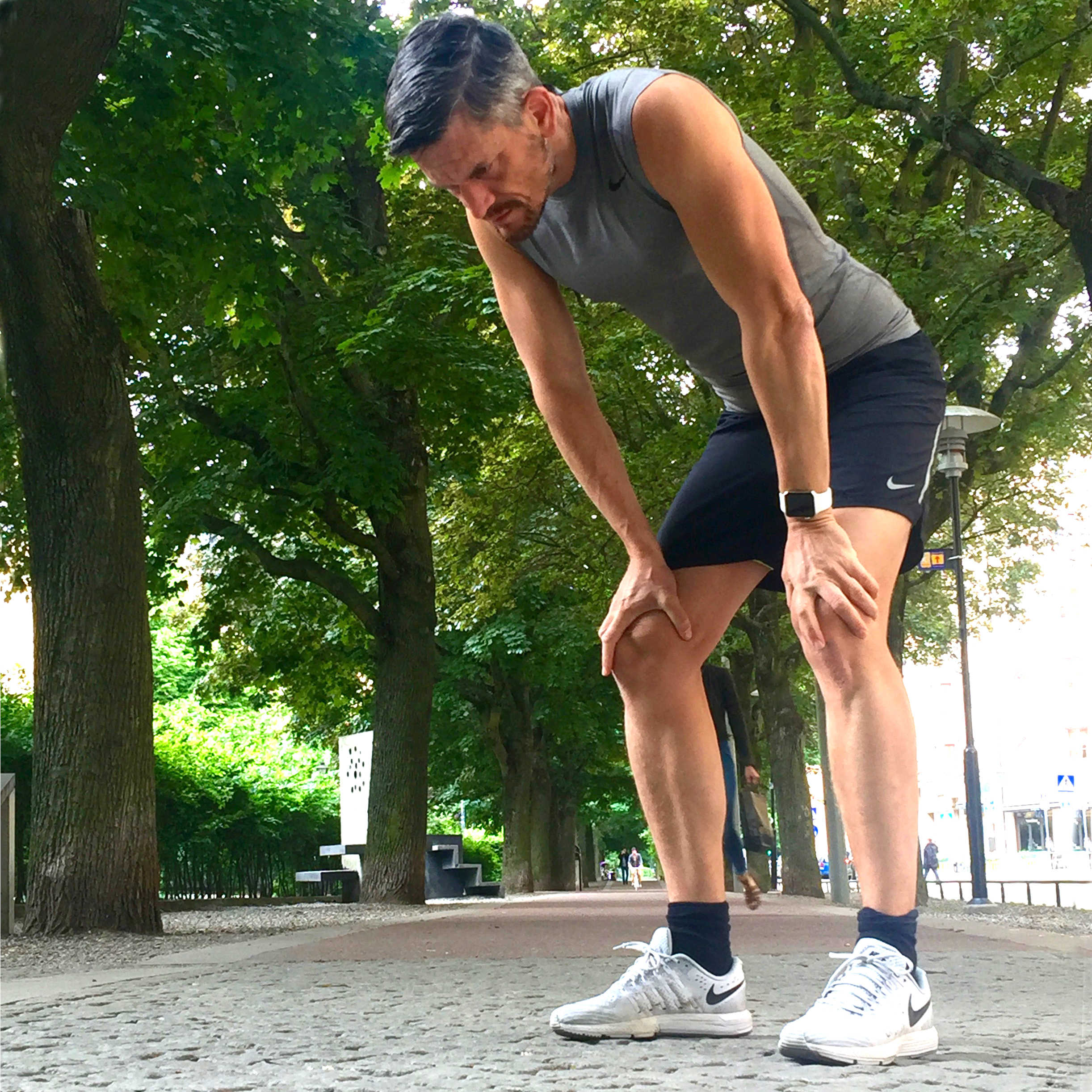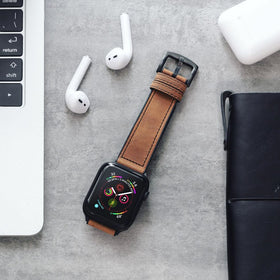Put your fitness to the ultimate test with Apple Watch

If you want to get in shape, the best way to get started is with some fitness testing. That might sound challenging, but luckily your Apple Watch is all you need to test yourself to the limit.
Fitness tests enable you to establish a baseline so you can see how your physical condition improves over time. And if you are already a fitness fanatic, regular testing enables you to identify areas of weakness and optimize your training program. Here’s how to make the Apple Watch a part of your essential fitness testing.
Get ready for the ultimate Apple Watch fitness test
Most fitness tests require “maximum exertion” — or, in other words, pushing yourself to your limits. If you are not used to exercise, this can be dangerous. So if you are in any doubt, check with your physician first to make sure that it is safe for you to do these tests.
Still here? Good! You can use your Apple Watch and iPhone to test your strength, speed, endurance, body composition, cardio fitness and flexibility. Which are most important for you depends upon your personal goals. But for a great all-around fitness test, you can’t beat the Marine Corps.
Are you fit enough to join the Marines?
Every Marine must pass the Physical Fitness Test (PFT) once a year. There are three parts to it: pullups, crunches and a 3-mile run. The Army has a similar PFT, but with a 2-mile run. No special equipment is required to perform the PFT, apart from a sturdy bar that can take your weight for pullups.
Your Apple Watch can’t help you with the pullups and crunches — just try to do as many as you can in a single session without resting, following the Marines’ strict guidelines.
For the run test, set a 3-mile distance goal in the Workout app on your Apple Watch. Be sure to keep an eye on your progress during the run: The Workout timer will keep going after you reach your 3-mile goal, so you’ll need to stop it manually when you’re done.
PFT tests are scored on a point system, and several iPhone apps can calculate your score. The best I’ve found is Marine PFT. An in-app purchase ($4.99) enables you to log your scores and monitor your progress over time.

Photo: Graham Bower/Cult of Mac
Testing your VO2 max with Apple Watch
The PFT is designed to assess a Marine’s general readiness for combat by combining tests for strength and endurance. If you want to focus specifically on cardiovascular fitness, the Cooper test is for you. It measures VO2 max, which Wikipedia defines as the “maximum rate of oxygen consumption as measured during incremental exercise.”
Working muscles need a constant supply of oxygen. This enters your body via the air your lungs breath in. Then your cardiovascular system transports the oxygen around the body to your muscles.
Short bursts of exercise, like you get from lifting weights or sprinting, can be performed without much oxygen intake because your muscles can work “anaerobically,” using short-term energy stores. But for endurance exercise sustained over longer periods — think activities like distance running, cycling or rowing — your muscles require continuous oxygen supply. Simply put, the more oxygen your muscles get, the faster you can go. Your V02 max is a measurement of the liters of oxygen you can deliver to your muscles per minute.
No Apple Watch fitness app can measure your VO2 max directly. For that, the device would need sensors that measure the concentration of oxygen and carbon dioxide in the air you breath. But you can at least estimate your VO2 max by performing the Cooper test, which was originally developed for the Air Force.
The test involves running as far as you can in 12 minutes. The distance you run in this test is a good indicator of your VO2 max. Traditionally, it is conducted at a running track, but with your Apple Watch you can do it almost anywhere. You just need to find some level ground without obstructions, traffic or road crossings -– a park, for example. Accuracy is essential with this test, so remember to take your iPhone on your run, since carrying it boosts the accuracy of your Watch.
Before you get started, warm up by walking briskly for 10 minutes. When you’re ready, launch the Workout app on your Watch, select a Time Goal (in yellow), and scroll the Digital Crown up to 12 minutes elapsed time. Then you simply run as fast as you can for 12 minutes without stopping. As with the PFT, remember to check your Watch regularly, because it will not automatically stop the workout when you reach 12 minutes — you’ll need to do this manually in order to get the correct distance.
When you’ve finished the test, you will feel exhausted — but you should force yourself to do a 10-minute slow jog to cool down. You’ll feel better for it, I promise.
Once you know your distance, you can enter it into this free calculator to get your VO2 max and find out how you compare with the general population. Alternatively, try 12 Minute Run, a 99-cent iPhone app that measures your distance using GPS and automatically calculates your VO2 max.
You can improve your performance in this test with some practice. Try not to start out too fast, because you will peak early and run the second half slowly. An even pace throughout will usually give you the best time. Check your “Splits” times in the Activity app on your iPhone, to see how your pace varied between the first and second half. If your second mile was slower than your first, try starting a little more slowly next time you do the test.
Jump like a pro
Each year at the NFL Scouting Combine, college football players undergo a variety of fitness tests as they attempt to catch the eye of pro football scouts. One of these tests is the vertical jump. This is a test of lower-body strength and power. It is not just for receivers who must leap into the air to catch the ball — it is just as important for linemen who must burst off the line of scrimmage.
The NFL uses a special device with flags to measure how high athletes can jump. But you can perform a similar test using just your iPhone. myVertical is a free app that uses the iPhone’s built-in accelerometer to estimate how high you are jumping. All you need to do is put your phone (securely) in your pocket and jump.
This is a simple and fun app to use — it could do with a few more features, though. In particular, I would like to see a calendar that logs your jumps over time.
Time to recover
After all that hard work, you will probably need some time to recover. And your recovery time is something else you can test with your Apple Watch. Heart rate recovery time is a good indicator of your fitness level and the health of your heart.
To test your heart rate recovery time, check the Heart Rate Glance on your Apple Watch immediately after you finish your workout. Make a note of the beats per minute (BPM). Then go to the Timer app and set it for two minutes. When the timer is done, check the Heart Rate Glance again and make a note of this second BPM reading.
Now subtract the second BPM reading from the first to find your heart rate recovery time. If the difference increases over time, that’s a good indication that your cardiovascular fitness is improving.
Dedicated runners’ watches, like the TomTom Runner 2, automatically provide an assessment of your heart rate recovery time when you pause a workout.
Body composition and keeping your selfies secret
Measuring your body composition can be a frustrating and inexact science. Smart scales like the Withings Body Cardio can help by automatically syncing your weight and an estimate of your body fat via Wi-Fi to the Health app on your iPhone. And intriguingly, the latest model of Withings scales now claims to offer a pulse wave velocity test, which provides another indicator of your cardiovascular health.
Your scales may not show much change if you lose fat and gain muscle at the same time, but taking regular selfies can help you see if your six-pack is starting to make an appearance. If you are just getting started on your fitness journey, a shirtless selfie may be the last thing you want to see. But you’ll be glad you took it later, because you’ll have great before and after photos to see how far you’ve come.
Since this kind of selfie is very personal in nature, you may not want it showing up in your camera roll and the Photos app. Thus, a new category of fitness progress apps has emerged. These apps keep you selfies private with password protection, remind you when to take them, and even let you see animated transitions of your progress. The best of these apps that I have found are Fit-Stitch and Progress.

Photo: Graham Bower/Cult of Mac
Enjoy every excruciating minute of it
Researching this article has been an exhausting process, because I have personally tried out all these tests. But as pooped as I feel writing this, I can also honestly say I enjoyed every minute of it (even the agonizing 12 minutes of the Cooper test).
Pushing yourself to your limits gives you an incredibly exhilarating feeling — a bit like when you reach the finish line of a marathon, except it takes only minutes rather than hours to get there. So what are you waiting for? Summer’s here, so strap on your Apple Watch, download some fitness apps, get out there, and really test yourself.



Leave a comment